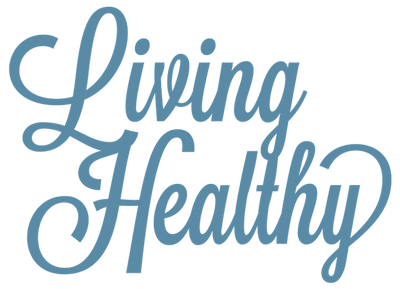
Preventing
Caregiver Burnout
While the job of caring for a loved one can be rewarding, it can also be draining. Guilt, sadness and anger can overcome a caregiver who feels out-of-balance. It’s hard to juggle the help we give and the demands of our own lives.
It’s not uncommon for caregivers to reach this point and feel burned out. If you care for someone and need a break from your role, taking steps to regain balance may help.
The first step is to recognize your feelings. Guilt, resentment, anger or depression are common feelings for caregivers. If you feel this way, it’s okay. By admitting when you feel bad, it may help you better address the problem and find ways to feel better.
Next, it’s of great value to schedule time every day to care for yourself and recharge. Even small things, like breathing deeply and focusing on your breaths, may bring you peace. Deep breathing may also help you sleep. Sleep is often lacking for caregivers! Your goal should be to get at least 7-8 hours of sleep per night. Exercise is a great help too. It’s amazing for stress relief, building energy and better sleep. The hard part may be scheduling time to exercise daily (even a walk), but it’s worth it!
In general, the trick for self-care is to know your limits. Set time to take care of yourself. Make sure to step away from your “job” and do things that make you feel better.
Finally, reach out to your network. You’re not alone. Sometimes the hospital social worker or nurse will offer coping ideas and solutions. There are great online resources and respite services too. Other times friends, neighbors or family may help. Even little things, like going to the post office for you, make a big difference. Spiritual organizations or support groups are also available. When problems seem overwhelming, stop everything. Break problems into small parts. Try to tackle only one issue at a time and don’t be afraid to ask for help.
Overall, remember the good things in life and the things you’re thankful for. When you care for yourself and find balance, you can be a better, happier, caregiver for others.
Heart-Healthy Black Bean Brownie Recipe
This comforting, nourishing soup recipe, courtesy of Chef Mary Nolan, has a mix of protein, vegetables and love. It can be made in advance and stored in the fridge to enjoy for up to 5 days later.

Chef Mary Nolan is a recipe developer, cooking instructor, host and enthusiastic eater. She is currently the Executive Chef at Bon Appétit magazine.
“You eat with all of your senses. Recipes curated by color will look beautiful and help you enrich your meals.”
Total: 50m | Prep: 10m | Serves: 16
Nutritional Information:
Serving Size: 1 brownie
117 calories, 16g carbs, 3g protein, 5.3g fat, 31mg cholesterol, 49mg sodium, 92mg potassium, 1.4g fiber, 11.4g sugar, 20mg calcium, 0.7mg iron
INGREDIENTS
(1) 15-oz can black beans, rinsed and drained
3 eggs
3 Tbsp flavorless oil (i.e. canola or sunflower)
1 tsp vanilla extract
¼ cup unsweetened cocoa powder
2/3 cup sugar
½ tsp baking powder
¼ tsp salt
½ cup semi-sweet chocolate chips (or desired amount)
PREPARATION
- Preheat oven to 350 degrees F (176 C)
- Rinse and drain black beans. Put into food processor and mix until thick paste.
- In a large bowl, mix together black bean paste, eggs, oil and vanilla extract.
In a separate bowl, mix together cocoa powder, sugar, baking powder and salt.
- Add dry ingredients to wet ingredients and stir in desired amount of chocolate chips.
- Grease an 8x8 inch baking pan and then place parchment paper inside.
- Pour in batter and bake for 30 to 40 minutes. Check after 30 minutes with a toothpick (the center may be a little gooey and that’s okay!). Cook for an additional 10 minutes for brownies that are more firm.
- Allow brownies to cool for 5-10 minutes before cutting.
Enjoy!!
Eating healthy may play a role in cancer prevention. Many cancers are linked to excess weight. Healthy eating also helps people during cancer treatment and recovery. Chemotherapy, surgery, radiation therapy and other cancer treatments can take a toll on the body. They may affect taste, smell, appetite and the ability to absorb nutrients from food.
If you or someone you love is dealing with cancer, talk with your doctor or care team about what is best to eat and drink during cancer treatments. They may refer you to a dietitian who can help you with your diet during and after treatments.
Here are some living healthy basics you can apply:
Stay Hydrated
Your body needs a certain amount of liquid to function well. This is called hydration. Water, fruits, vegetables, smoothies, some soups, decaffeinated tea and unsweetened drinks are some examples for how to keep hydrated.
Eat Healthy
When choosing foods, try reaching for whole fruits, vegetables, legumes (like peas or beans) and other low-calorie options. Consider eating whole grains instead of refined grains. For example, choose whole-grain bread, pasta and cereal instead of refined foods like pastries, white rice or sugary cereals.
Check Nutrition Labels
Learn what to look for on the label. The US Food and Drug Administration (FDA) requires food companies to provide certain information on the nutrition labels printed on food packages. Nutrition labels can be filled with useful clues. When you eat something from a box, bag or fast food restaurant, look for options with less sugar, salt and calories.
Commit to Exercise
A doctor-approved workout may strengthen your body, improve your hormone levels and the way your immune system works. Even a little exercise to keep active can make a difference.
Stop Tobacco Use
Tobacco can cause cancer. There are benefits to stopping tobacco use at any age. Talk to your doctor if you are having trouble quitting the use of tobacco.
Plan Ahead for Travel
Pack healthy snacks for long trips or doctor visits. Try packing a small cooler with hummus and vegetables or apples and peanut butter. Or keep it simple with whole-grain crackers or trail mix. When you eat out, try to choose salads or grilled items instead of fried foods. When grocery shopping on the road, look for low-fat prepared meals, salads or rotisserie chicken options.

Cookbook funding and support provided by Pfizer Oncology.
UrologyHealth.org | SPRING 2022 | UROLOGYHEALTH extra